




4 - 5
<
>
PHOTONe
Back to the Future
Time Travel
The Invisible Universe
Falling into a Blackhole
Blackholes
Back to the Future and Back:
A Piece on Time Travel
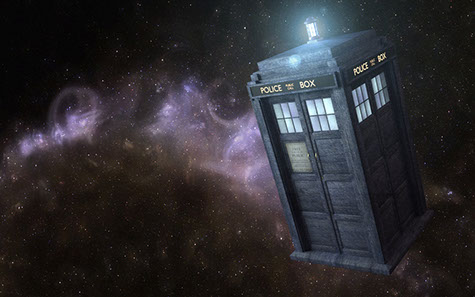 The subject of Time Travel has always fascinated me. As a kid, I always use to wonder and spend hours together trying to imagine how amazing it would be to see the past – or the future, and witness our destiny. But don’t worry, unlike the title, I will not be telling you how to make a Flux Capacitor, steal plutonium from the Libyans or even how to produce 1.16 Gigawatts of electricity from a clock tower. This is a very honest look at time itself, the theories which exist on time travel, the future and possibilities of time travel from one mere dot in the space-time continuum to another.
The subject of Time Travel has always fascinated me. As a kid, I always use to wonder and spend hours together trying to imagine how amazing it would be to see the past – or the future, and witness our destiny. But don’t worry, unlike the title, I will not be telling you how to make a Flux Capacitor, steal plutonium from the Libyans or even how to produce 1.16 Gigawatts of electricity from a clock tower. This is a very honest look at time itself, the theories which exist on time travel, the future and possibilities of time travel from one mere dot in the space-time continuum to another.
NATURE OF TIME
First let’s take a look at time itself. Many of us have pre-conceived notions on how time moves. Everyone thinks that it’s like a constant which just keeps moving linearly. But that is not true. Gravitational force has a big effect on time. It is said that when there is time in a gravitational field, the closer it is to the source of the magnetic field the slower it moves.And the further away it is, the faster it moves. Time is not constant even on Earth, it changes from place to place depending on the gravitational force. Due to gravitational force playing such a big part in time, time and space are deeply interlinked. Also, another factor that influences time is the speed with which someone is moving, the faster one moves the slower the time moves for that individual. Time being affected by speed and gravity is the ethos of all theories based on time travel.
TIME TRAVEL HAPPENING RIGHT NOW!
Who says that time travel is a thing of the future? It is happening as we speak, as you are reading this. One of the best examples of time travellers are Cosmonauts and their time machines are the rockets. For example Sergei Krickelev is a cosmonaut who has been living on the international space station. He has been travelling outside the Earth’s atmosphere for 803 days and at 17000 miles/hr. Since he is travelling faster than us (as I told you earlier about the relation between time and speed), for him time moves more slowly. So when he actually returns, our time will be ahead of his by 48th of a second. In other words, he would be 48ths of a second in the future! (its not that much but it is something!). At the CERN Supercollider in Switzerland, since the protons travel at the speed of light, for them time keeps slowing down, and this further enables us to recreate the event of the big bang potentially by sending particles into the past!
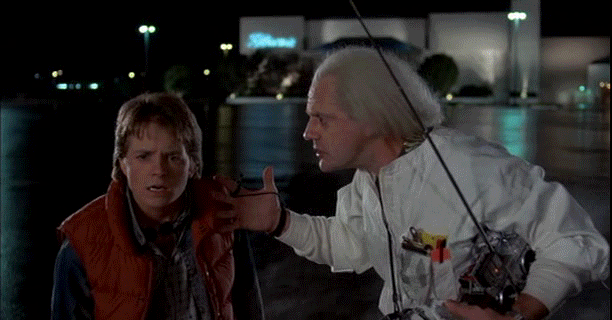 SOME THEORIES IN EXISTENCE FOR TIME TRAVEL
SOME THEORIES IN EXISTENCE FOR TIME TRAVEL
Einstein was going to work, barely 20 years of age, and he looked at a clock tower and suddenly it all clicked. He discovered a small thing known as Relativity. Einstein’s theory of Relativity basically says that time is the fourth dimension of our existence along with length, width and depth being the other three dimensions of space. He mathematically proved that space is curved, also known as General Relativity. Now that he proved that space is curved, he said that time travel will be possible by forming bridges or loops in space and time.
Mathematicians further ratified Einstein. They said that if the universe spun along its axis and if we stayed still, we could travel to any time. But the only problem is that the universe doesn’t spin on an axis. Hence this idea was rejected.
Another physicist Dippler, suggested that we use a “spinning cylinder” through space for time travel. He says that when this cylinder spins at light speed, space and time will become constricted along that one cylinder. Dippler said that if a body moved in the form of a spiral against the direction of flow of time, we could travel to the past. But there were problems with Dippler’s Cylinder also. One, was the that this cylinder will have to be infinite which is like creating a universe which we obviously can’t do. Second, is that when we spin this cylinder at light speed, it will create a lot of energy. This energy will make the cylinder unstable and it will explode, creating a singularity , a hole in space and time.
Another method proposed to travel in time is through Wormholes. A wormhole is essentially a tunnel which traverses through 3D space, with both of its ends opening on 2D planes. Imagine a tube going through a hollow cylinder. It is a kind of shortcut to travel between large distances in space. But the problem with wormholes is that they are the size of an atom. If we have enter and cross a wormhole we have not only make it bigger, but also hold it that way. But how to do that ? Some scientists believe that negative energy holds the key. Unless the human race achieves a very advanced civilisation, controlling negative energy won’t be possible( but Interstellar anyone ?) .
Our entire history is based on inventions and humans taking the next step towards evolution. Time Travels time will come, ( pun intended) mark my words. As Einstein once said “The only reason time exists, is so that everything doesn’t happen at once”.
The Invisible Universe
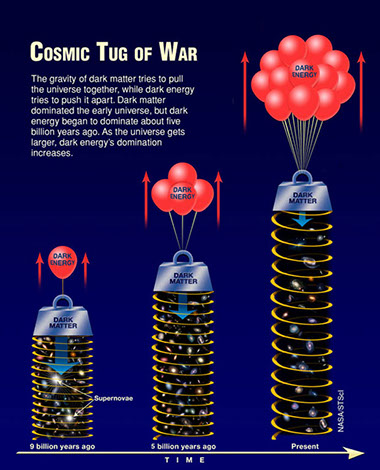 Imagine a heavy ball attached to a cotton string. Now imagine you are whirling it around over your head. It doesn’t take a genius to know that after reaching a certain speed, the string is going to break and the ball is going to fly away. Now use this same logic on any typical spiral galaxy. Obviously, astronomers don’t use strings and heavy balls, but rather, they think in terms of gravity (the string that holds a spinning galaxy together) and star clusters (the heavy objects spinning in circles).
Imagine a heavy ball attached to a cotton string. Now imagine you are whirling it around over your head. It doesn’t take a genius to know that after reaching a certain speed, the string is going to break and the ball is going to fly away. Now use this same logic on any typical spiral galaxy. Obviously, astronomers don’t use strings and heavy balls, but rather, they think in terms of gravity (the string that holds a spinning galaxy together) and star clusters (the heavy objects spinning in circles).
So, you stare at the galaxy and notice that it is spinning ridiculously fast for an object of its mass. You smile to yourself and know it’s only a matter of time before the “string” breaks, and the galaxy rips itself to shreds. You wait and… nothing happens. The galaxy keeps spinning happily and you scratch your head and decide to burn all the books you’ve ever read on Newtonian mechanics. This is exactly what Jan Oort in 1932 and Fritz Zwicky in 1933 thought when they observed galaxies such as the milky way, and became the first few to postulate the existence of a substance known as “dark matter”.
Using the same ball and string analogy, imagine the string was not cotton, but a bridge cable. It would obviously take a lot more momentum to produce the tension required to break the string now, wouldn’t it? Since gravity is our astronomical string and gravitational force increases only with mass, we can come to the logical conclusion that there must be some “invisible mass” present in space that is virtually undetectable, and should quickly run and pull our textbooks out of the bonfire we had set up earlier.
So, what exactly is dark matter? Dark matter is basically a form of mater (obviously) that is made up of Weakly Interacting Massive Particles, or WIMPs, which are basically particles that do not interact with light and have no charge, and so can’t be detected by our normal means of detecting such forms of exotic matter. We can, however, know they exist due to inferences made from their gravitational effects. What we do know about WIMPs (if they do, in fact, exist) is that they have mass and interact with matter with a force similar, if not identical to the Weak Nuclear Force (one of the four fundamental interactions of the universe).
As much as we’d all like to believe that maybe Newton made a calculation error when calculating the value of the gravitational constant, the evidence for dark matter is overwhelming; the following are just a few means by which the existence of dark matter can be proven.
The Virial Theorem basically gives the maximum rotational speed a body comprised of several particles can move at, which is proportional to its mass. When galaxies are observed, some discrepancies are found in the theorem, and so, we can infer that galaxies are heavier than previously thought, thus indicating the evidence of dark matter.
Just like matter is annihilated when it comes in contact with antimatter, dark matter is annihilated when it comes in contact with its antiparticle, which is… dark matter itself! So, when a WIMP annihilates another WIMP, the explosion releases gamma radiation, which, thankfully, is easy to detect. Sadly, practically every object in the universe emits some form or the other of gamma radiation, as this radiation is emitted by almost all celestial objects which exhibit movement, collisions, annihilations, etc. So how can we tell what gamma rays are coming from dark matter annihilations and what aren’t? The solution is to look at the most boring structures of the universe: Dwarf Spheroidal. These galaxies are so vapid to astronomers that we can be sure that any gamma radiation being emitted from one of them is from dark matter annihilation, because literally nothing else is happening inside the Dwarf Spheroidal. In fact, it is postulated that in the early stages of the formation of the universe, matter and dark matter entwined and formed structures that grew bigger and bigger and eventually formed Dwarf Spheroidals, which would explain how they have so much dark matter in them.
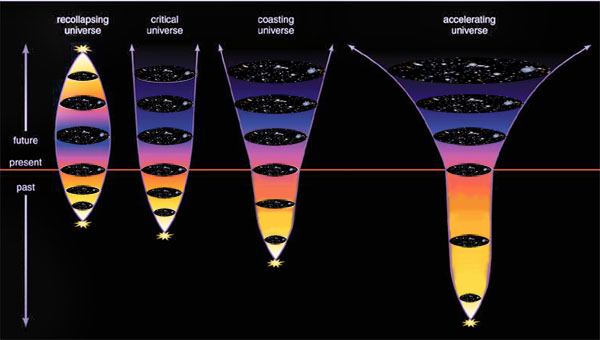 So, as of now, we believe that dark matter is basically the glue that holds the universe together. It spreads throughout the universe, either in stringy filaments or in randomly assorted clumps, with no real pattern, although, it does seem to be more concentrated in areas of high energy, such as the centers of galaxies.
So, as of now, we believe that dark matter is basically the glue that holds the universe together. It spreads throughout the universe, either in stringy filaments or in randomly assorted clumps, with no real pattern, although, it does seem to be more concentrated in areas of high energy, such as the centers of galaxies.
But, wait, there’s more. Just in case you thought this wasn’t complicated enough, here’s a little more science that comes in the form of dark energy.
Just like matter is associated with energy, dark matter is associated with dark energy. Dark energy is, in very basic terms, negative gravity. Now while gravity holds things together, dark energy basically rips them apart. Now, we know that dark energy exists by observing the redshift of distant galaxies.
So, while dark matter holds the universe together, dark energy rips it apart. But here’s the problem. It looks like eventually dark energy is going to win. Unlike dark matter, which is randomly assorted throughout the universe, dark energy has a constant spread across the universe throughout space and time. Which means that as the universe begins expanding, the absolute amount of dark energy is going to keep increasing, thus causing the expansion of the universe to accelerate. Scientists hypothesize the “Big Rip” occurring due to this, where the universe starts expanding so quickly that gravity is defeated by dark energy, so much so that not only will galaxies be shredded, but even the bonds of atoms will be split, though this will happen in millions of years.
The Fermi Telescope and the Large Hadron Collider have taken steps to increase our understanding of these simultaneously cosmological and quantum phenomena that basically make up the entire universe, though we need to acknowledge that our entire perception of the universe is less than 5 percent of the real situation. Surely, though, with more research we will be able to better understand the workings of our invisible universe.
Falling Into a Black-hole:
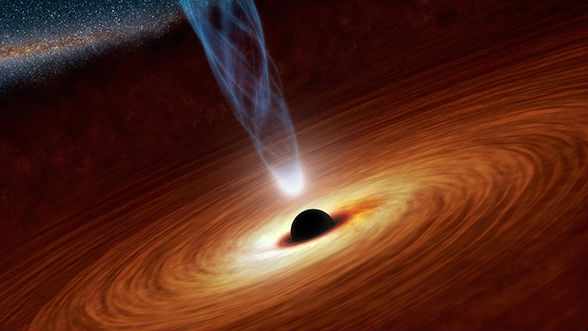 It’s a pleasant Sunday afternoon and you decide to take your new Intergalactic Automobile for a little spin, when that guy you kind of know, but not very well, pops up and tags along. ‘It’s ok’, you tell yourself, ‘even he can’t ruin the maiden voyage of your Hermes-4000, powered by a 7 cylindered VASIMR engine, fully equipped with radiation barriers and satellite radio’. But he does. He simply won’t shut and about his pet Zebraffe, Kevin, despite your numerous attempts at diverting the conversation. Just when you’re on the brink of losing it, you see it.
It’s a pleasant Sunday afternoon and you decide to take your new Intergalactic Automobile for a little spin, when that guy you kind of know, but not very well, pops up and tags along. ‘It’s ok’, you tell yourself, ‘even he can’t ruin the maiden voyage of your Hermes-4000, powered by a 7 cylindered VASIMR engine, fully equipped with radiation barriers and satellite radio’. But he does. He simply won’t shut and about his pet Zebraffe, Kevin, despite your numerous attempts at diverting the conversation. Just when you’re on the brink of losing it, you see it.
Well, to be fair, you don’t actually see it, your sensors just kinda go haywire. Your gravity dials shoot up in the direction of seemingly empty space. You suddenly know what to do. You quietly reach underneath your seat and find it. ‘Goodbye, Mr. Bond’, you whisper. He begins to get perplexed, and then he’s gone. You’re glad you had that ‘Eject Passenger’ button installed. But then something odd happens. As he flies past your window towards the black-hole you intended for him, he seems to be slowing down. ‘That’s counter-intuitive’ you think to yourself. He’s falling towards something with a gravitational pull so great that it prevents light from escaping it’s surface, yet instead of accelerating, he seems to be slowing down. That’s odd, he still seems to be slowing down further, and turning reddish. Eventually, you think your eyes are probably deceiving you, for it looks as though he has completely stopped, frozen in suspended animation at the brink of a black-hole. He’s turning redder yet, though still frozen. And now he seems to be dissolving into thin vacuum, as if someone were gradually reducing his opacity. And then he’s gone. ‘Good Riddance’ you think, still slightly mystified, as you manoeuvre back to your house on Kepler 186-f.
What you just witnessed was an accurate description of what it would look like, to watch someone fall into a blackhole. Let’s go through each of the observations made, and I’ll try and explain them as best I can.
The first thing you notice is that you don’t actually see the blackhole. Most pictures you see of blackholes are a literal black hole in the middle of space, which is flat out wrong. Black holes don’t literally look like black holes. If anything, they look like a portion of space which seems pinched or stretched. This is because they don’t release any light of their own(except perhaps Hawking radiation), and bend the light passing near them to make it look pinched.
Then comes the part about your victim slowing down rather than speeding up. I assure you, he himself is probably speeding up to the point where his atoms are being ripped apart, but the light reflecting off him is slowing down due to the massive gravitational pull of the blackhole, so it takes longer to reach your eyes, until the point where this reflected light has stopped moving altogether, creating the illusion of him being frozen in space. Also, because of the ginormous velocity with which he is falling away from you, the doppler effect for light becomes apparent, causing a redshift in the image you see. Soon he begins to disappear, since this redshift goes further to the point where the light you perceive is in the infrared and lower frequency spectrum, so you can no longer detect it with your eyes. And then he’s gone.
ONe
ISSUE XVII